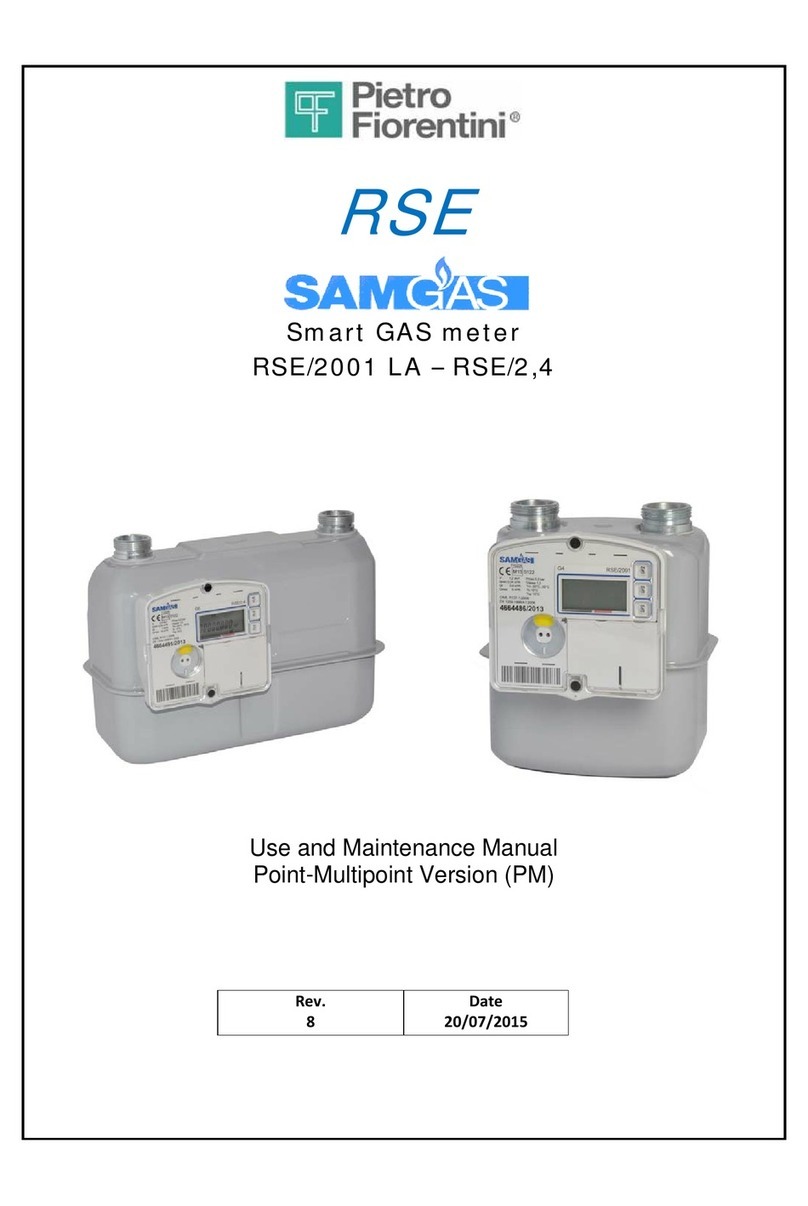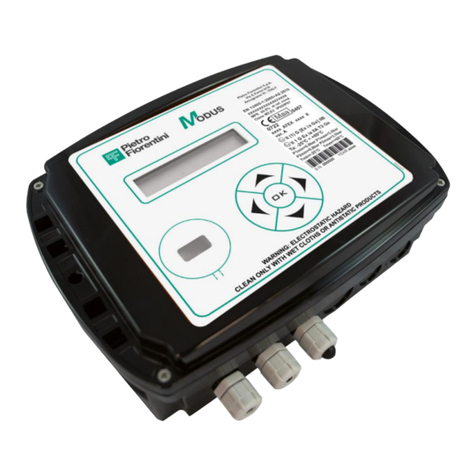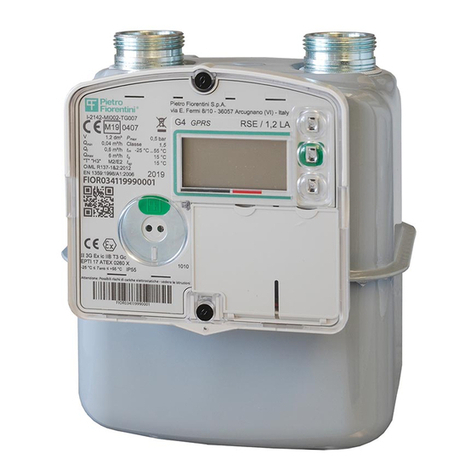
8 9
IM-RM
IM-RM
EN Use, maintenance and warning manual
ROTARY METER |INTRODUCTION |REV. A
Use, maintenance and warning instructions
ROTARY METER |INTRODUCTION |REV. A EN
10 - TROUBLESHOOTING........................................................................................................ 77
10.1 -GENERAL WARNINGS ........................................................................................................................... 77
10.2 -OPERATOR QUALIFICATION SPECIFICATION........................................................................................ 78
10.3 -TROUBLESHOOTING ............................................................................................................................. 78
10.4 -TROUBLESHOOTING TABLES ............................................................................................................... 79
11 - UNINSTALLATION AND DISPOSAL ................................................................................. 81
11.1 -GENERAL SAFETY WARNINGS.............................................................................................................. 81
11.2 -QUALIFICATION OF THE OPERATORS IN CHARGE............................................................................... 81
11.3 -UNINSTALLATION................................................................................................................................... 81
11.4 -INFORMATION REQUIRED IN CASE OF RE-INSTALLATION................................................................... 82
11.5 -DISPOSAL INFORMATION...................................................................................................................... 82
11.5.1 - EQUIPMENT MATERIALS......................................................................................................................83
12 - RECOMMENDED SPARE PARTS..................................................................................... 85
12.1 -GENERAL WARNINGS ........................................................................................................................... 85
12.2 -HOW TO REQUEST SPARE PARTS........................................................................................................ 85
12.3 -SPARE PARTS LIST ................................................................................................................................ 85
6 - INSTALLATION .................................................................................................................. 49
6.1 - SPECIFIC SAFETY WARNINGS .............................................................................................................. 49
6.2 - INSTALLATION PRE-REQUISITES........................................................................................................... 50
6.2.1 - ALLOWED ENVIRONMENTAL CONDITIONS.........................................................................................50
6.2.2 - STORAGE LASTING LONGER THAN THE MAXIMUM TIME ALLOWED ................................................50
6.2.3 - CHECKS BEFORE INSTALLATION........................................................................................................51
6.3 - GENERAL INFORMATION ON THE LINE ................................................................................................ 53
6.3.1 - MOUNTING POSITION AND FLOW DIRECTION ...................................................................................53
6.4 - INSTALLATION PROCEDURES............................................................................................................... 55
6.4.1 - EQUIPMENT INSTALLATION.................................................................................................................55
6.4.1.1 - TIGHTENING TORQUES ..............................................................................................................56
6.4.2 - ELECTRICAL CONNECTIONS ..............................................................................................................57
6.4.2.1 - LOW-FREQUENCY SENSOR IMPULSE OUTPUT (LF) ..................................................................58
6.4.2.2 - HIGH-FREQUENCY (HF) SENSOR IMPULSE OUTPUT.................................................................59
6.5 - POST-INSTALLATION INSTRUCTIONS ................................................................................................... 60
6.6 - LUBRICATION......................................................................................................................................... 60
6.6.1 - FILLING THE OIL TANKS.......................................................................................................................61
7 - COMMISSIONING/MAINTENANCE EQUIPMENT........................................................... 63
7.1 - LIST OF EQUIPMENT.............................................................................................................................. 63
8 - COMMISSIONING ............................................................................................................. 65
8.1 - GENERAL WARNINGS ........................................................................................................................... 65
8.1.1 - SAFETY REQUIREMENTS FOR COMMISSIONING ...............................................................................65
8.2 - PRELIMINARY PROCEDURES FOR COMMISSIONING .......................................................................... 66
8.3 - METER COMMISSIONING...................................................................................................................... 67
9 - MAINTENANCE AND FUNCTIONAL CHECKS................................................................ 69
9.1 - GENERAL WARNINGS ........................................................................................................................... 69
9.2 - MAINTENANCE OPERATIONS................................................................................................................ 70
9.2.1 - OPERATIONS PRIOR TO MAINTENANCE.............................................................................................70
9.3 - ROUTINE MAINTENANCE ...................................................................................................................... 71
9.3.1 - PERIODICALLY CHECKING AND INSPECTING THE EQUIPMENT FOR PROPER OPERATION ............71
9.3.2 - TOPPING UP OIL ..................................................................................................................................72
9.3.3 - OIL CHANGE ........................................................................................................................................73
9.4 - SPECIAL MAINTENANCE ....................................................................................................................... 75
9.4.1 - UNINSTALLING THE METER.................................................................................................................76
































